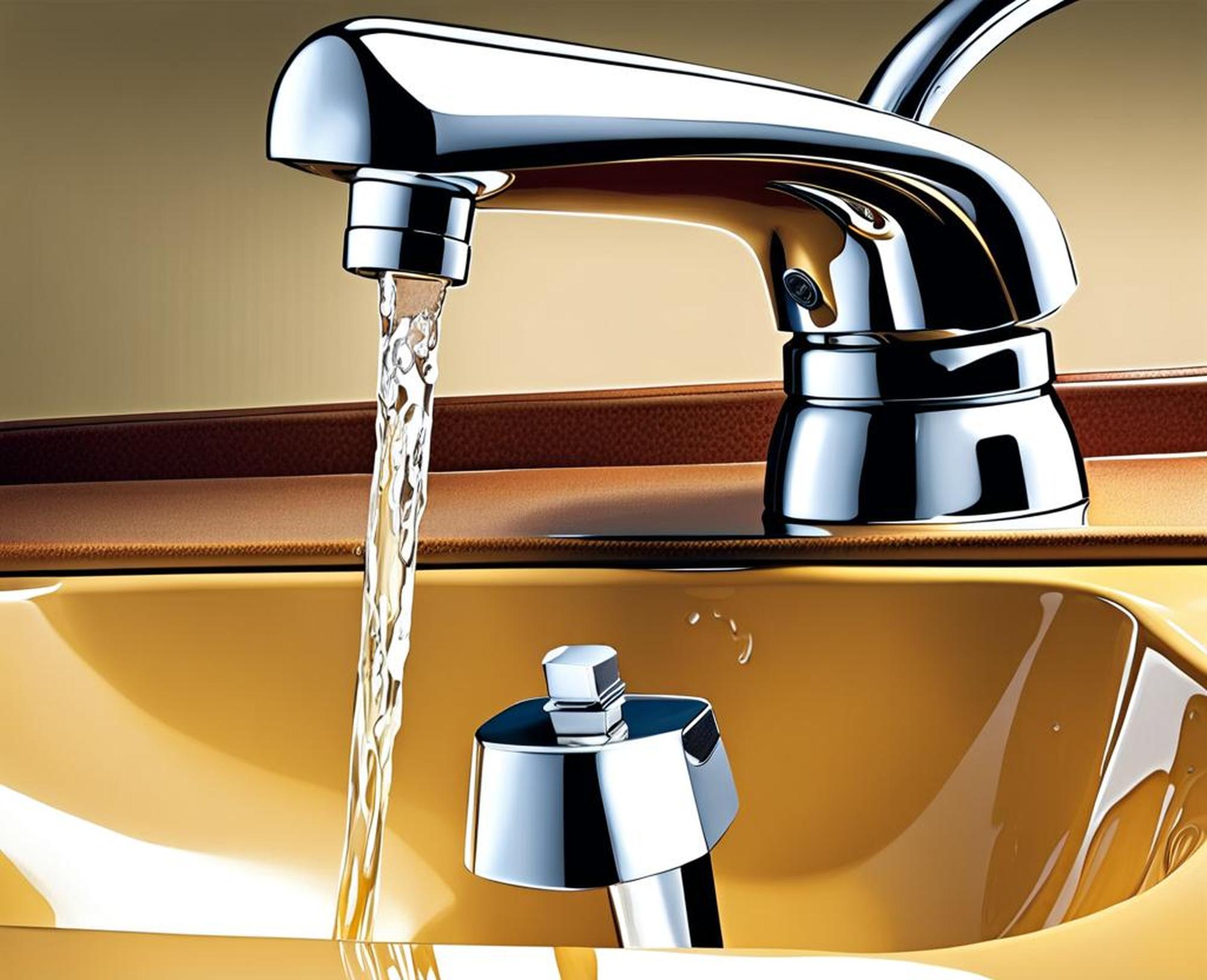Is your bathroom or kitchen faucet suffering from embarrassingly low water flow? Do you find yourself impatiently waiting for the drips and drabs to fill a glass or pot? If so, you’re not alone. Calcium and limescale buildup is a common plumbing problem that can slow faucets to a crawl.
But before you despair or call the plumber, reach for a bottle of white vinegar. This pantry staple is an effective home remedy for dissolving mineral deposits and restoring your faucet’s flow.
How Calcium and Limescale Buildup Occurs Inside Faucets
Hard water is the underlying cause of annoying calcium and limescale accumulation in plumbing fixtures. Water described as “hard” contains high amounts of dissolved minerals like calcium and magnesium. As hard water passes through pipes, showerheads, and faucet aerators, these minerals are left behind.

Over time, calcium and limescale deposits build up inside the narrow pipes and holes of faucet fixtures, eventually clogging them. Some common symptoms include:
- Reduced water flow or pressure
- Spitting or sputtering from the faucet
- Cloudy mineral residue around faucet outlets
If ignored, severe buildup can completely block water flow, damage faucet parts, and require replacement of the entire fixture. The good news? Removing calcium and limescale deposits with vinegar can restore flow and prevent expensive plumbing repairs.
Why Vinegar Effectively Dissolves Mineral Buildup
Vinegar contains acetic acid, which reacts with calcium carbonate deposits to form water soluble calcium acetate. In simpler terms, the acetic acid in vinegar dissolves mineral buildup.
What makes vinegar an especially appealing descaling agent? Consider these benefits:
- Non-toxic and eco-friendly
- Natural cleaning and dissolving power
- Readily available and inexpensive
- Safer to use than harsh chemical cleaners
While commercial descaling solutions are available, vinegar offers a cheaper and gentler alternative without toxic fumes or residues.
Removing Calcium Buildup from Faucet Aerators
Faucet aerators are small attachments with screens and air-mixing holes that regulate water flow. They are magnets for mineral deposits. Allowed to accumulate, calcium and limescale will clog the aerator’s pores and reduce water output.
Fortunately, aerators are designed to be easily detached from faucets for regular cleaning. Here’s a simple approach using the power of vinegar:
- Unscrew the aerator from the tip of the faucet. You may need pliers if it’s stuck on tightly.
- Submerge the entire aerator in a bowl or plastic bag filled with undiluted white vinegar.
- Allow it to soak for at least 1 hour. For severe buildup, soak overnight.
- Rinse the aerator thoroughly under running water.
- Use an old toothbrush or small scrub brush to gently dislodge any remaining limescale.
- Rinse once more and dry with a clean cloth.
- Screw the aerator back onto the faucet.
Be patient – restoring full water flow may take several long vinegar soaks and scrubbings. But don’t give up, the vinegar will eventually eat through the toughest calcium deposits!
Descaling Calcium Buildup Inside the Faucet
Removing the aerator only solves part of the problem. For a complete descaling, vinegar must be applied to the interior of faucet fixtures. With some simple DIY techniques, vinegar can work its magic inside the faucet too:
DIY Vinegar Faucet Descaling
For this approach, you’ll need white vinegar, a large resealable plastic bag, a rubber band, and some paper towels:
- Turn the faucet handle to the open position. Place a paper towel over the drain to prevent vinegar from dripping down.
- Fill the plastic bag about halfway with undiluted white vinegar.
- Slide the bag up and around the faucet neck, with the opening of the bag pressed firmly over the faucet outlet.
- Secure the bag in place using a rubber band. Adjust it so the bag is snug against the faucet.
- Leave the vinegar-filled bag on for at least 1 hour. For extreme buildup, allow it to work overnight.
- After descaling, remove the bag and rinse the faucet thoroughly with warm water.
Take care not to spill vinegar on bathroom or kitchen counters and be sure to rinse any drips immediately. With this simple method, the acetic acid in the vinegar dissolves calcium deposits inside the faucet over time.
Stubborn Calcium Buildup Solutions
For calcium deposits that resist vinegar soakings, here are two more aggressive approaches:
Baking Soda and Toothbrush: Make a paste of baking soda and water. Apply it to the faucet outlet with an old toothbrush. Gently scrub at the calcium deposits for 5-10 minutes before rinsing.
Commercial Descaler: Descaling solutions with sulfamic or formic acid are designed to dissolve stubborn mineral buildup. Carefully follow manufacturer instructions, as these products can damage skin and surfaces.
When mineral deposits persist despite thorough vinegar descaling methods, these options provide extra dissolving power.
Preventing Future Calcium and Limescale Buildup
Removing existing calcium deposits is only half the battle. Preventing ongoing buildup is key to maintaining a flowing faucet. Here are some tips:
- Install a water softener to reduce water hardness and mineral content.
- Clean faucet aerators and showerheads with vinegar every 2-3 months.
- Occasionally fill faucets with vinegar and let it work overnight to descale interior.
- Upgrade old fixtures to new low-flow, water saving models.
Attacking calcium and limescale buildup from both ends – removal and prevention – leads to clean, clog-free plumbing. Don’t tolerate frustratingly slow faucets and showerheads!
Hard water woes like calcium and limescale buildup can put the brakes on faucet flow, but vinegar offers an inexpensive, non-toxic solution. With some simple descaling techniques, vinegar’s acetic acid dissolves mineral deposits and restores vigorous water flow.
By regularly descaling fixtures with vinegar and taking steps to prevent buildup, you can enjoy drip-free, deposit-free faucets for years to come. Don’t wait until you have barely a trickle – descale as soon as flow slows. Your patience and faucets will thank you!
